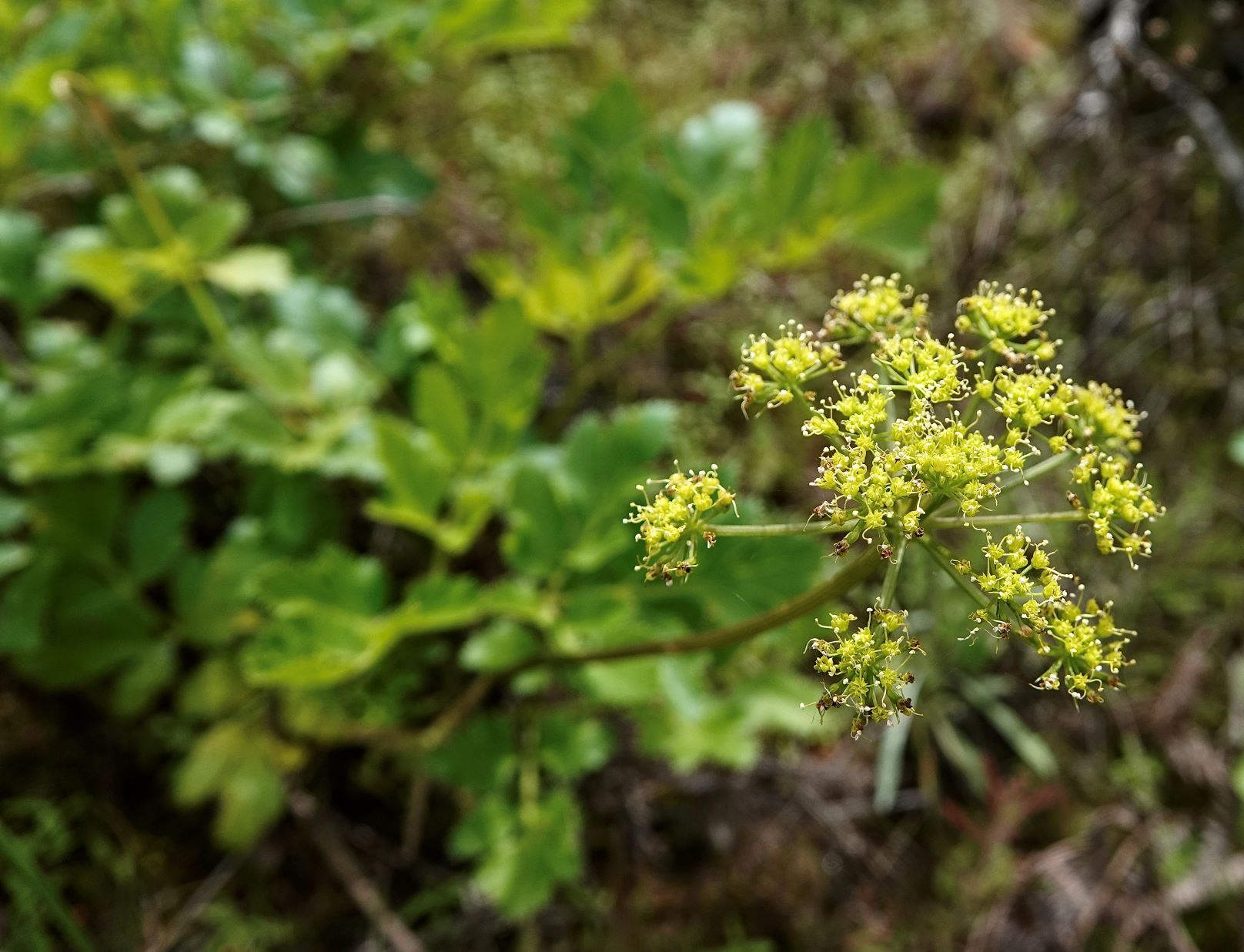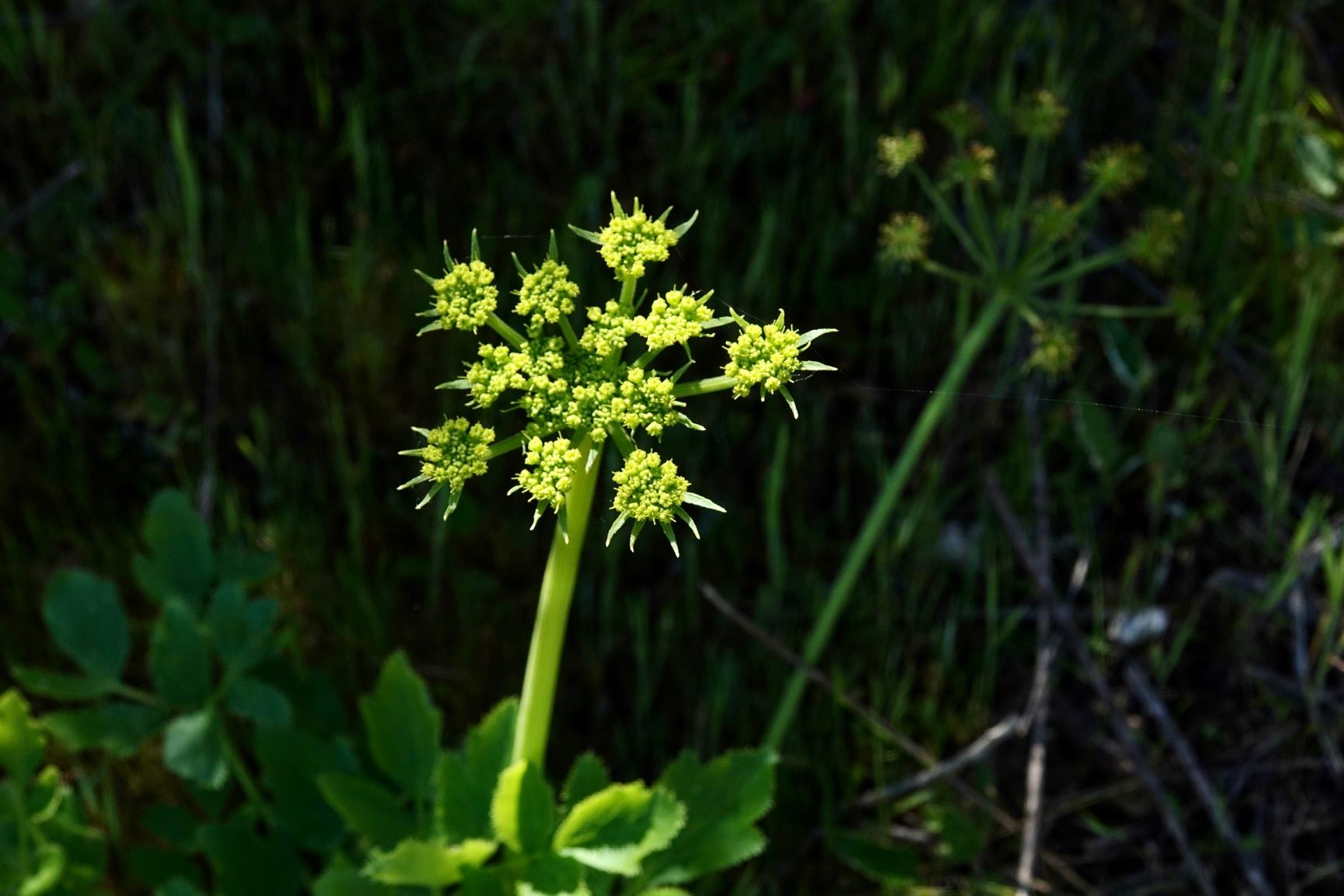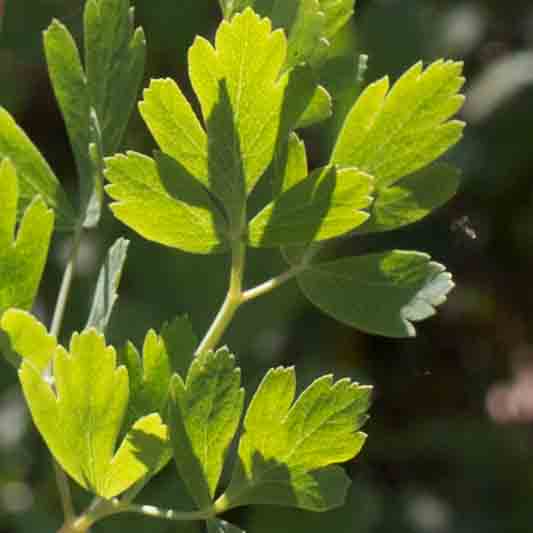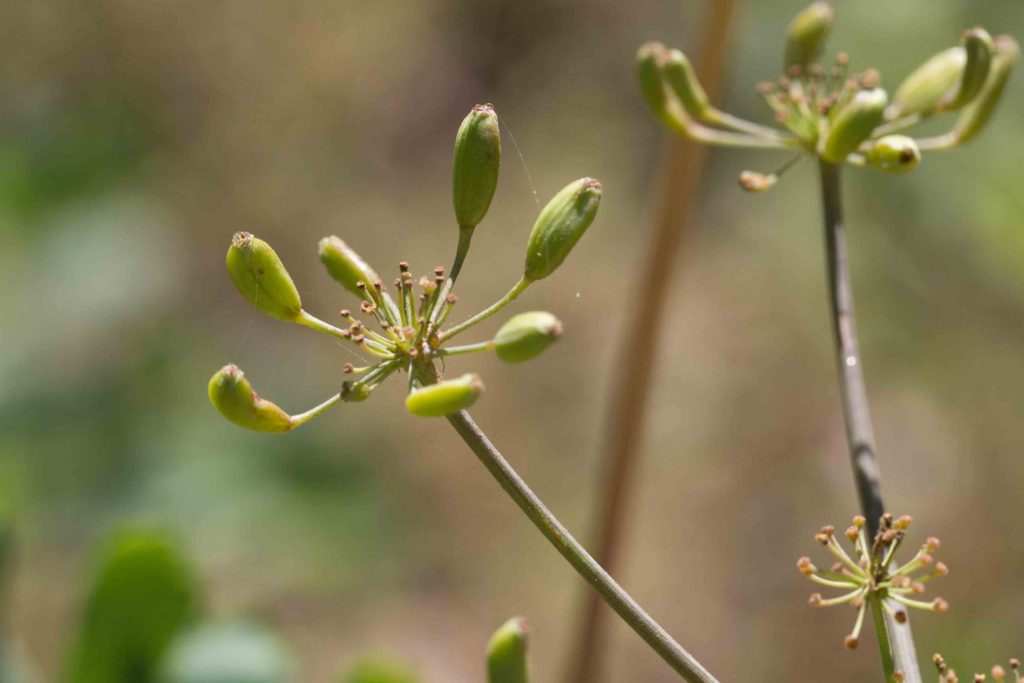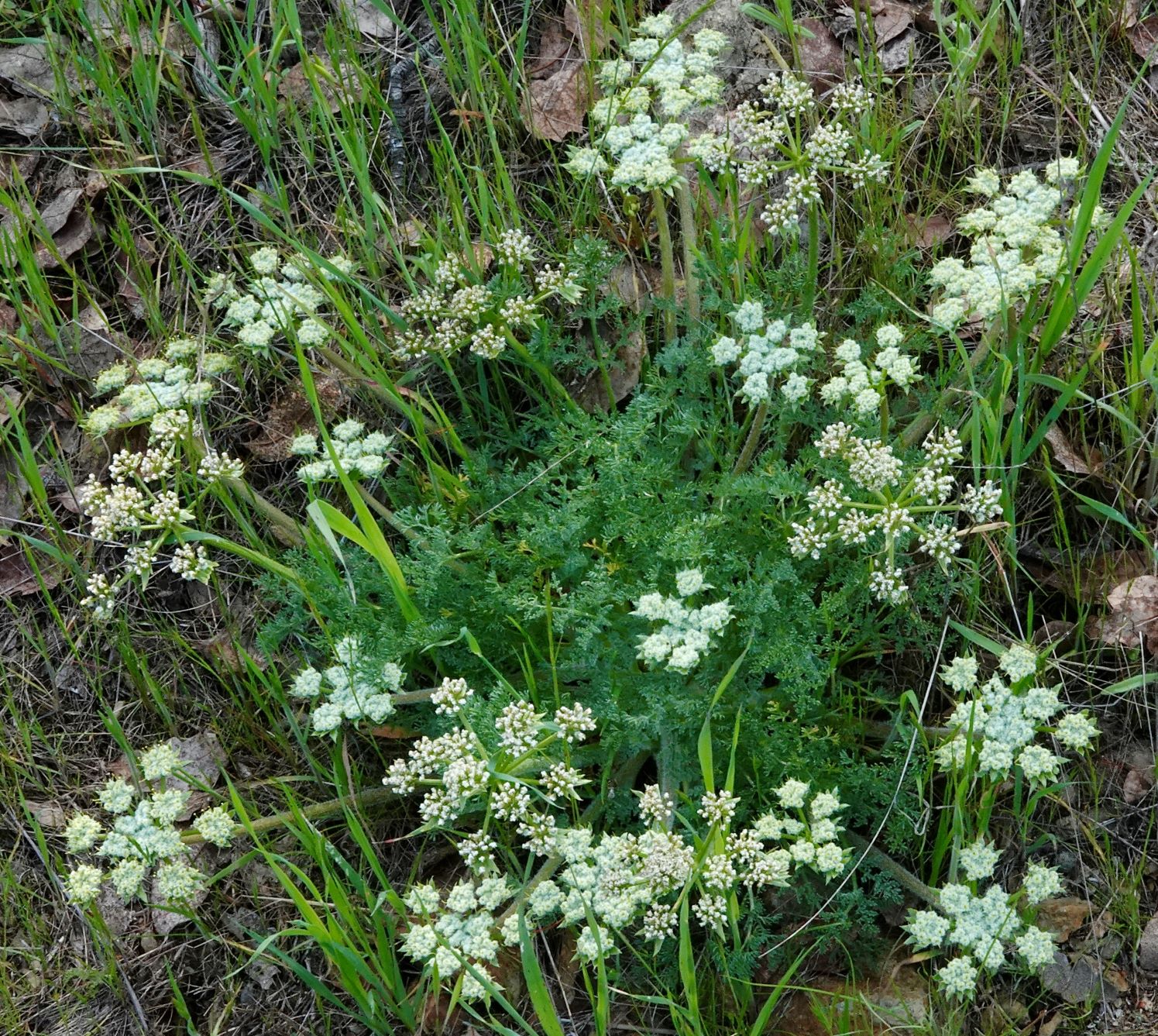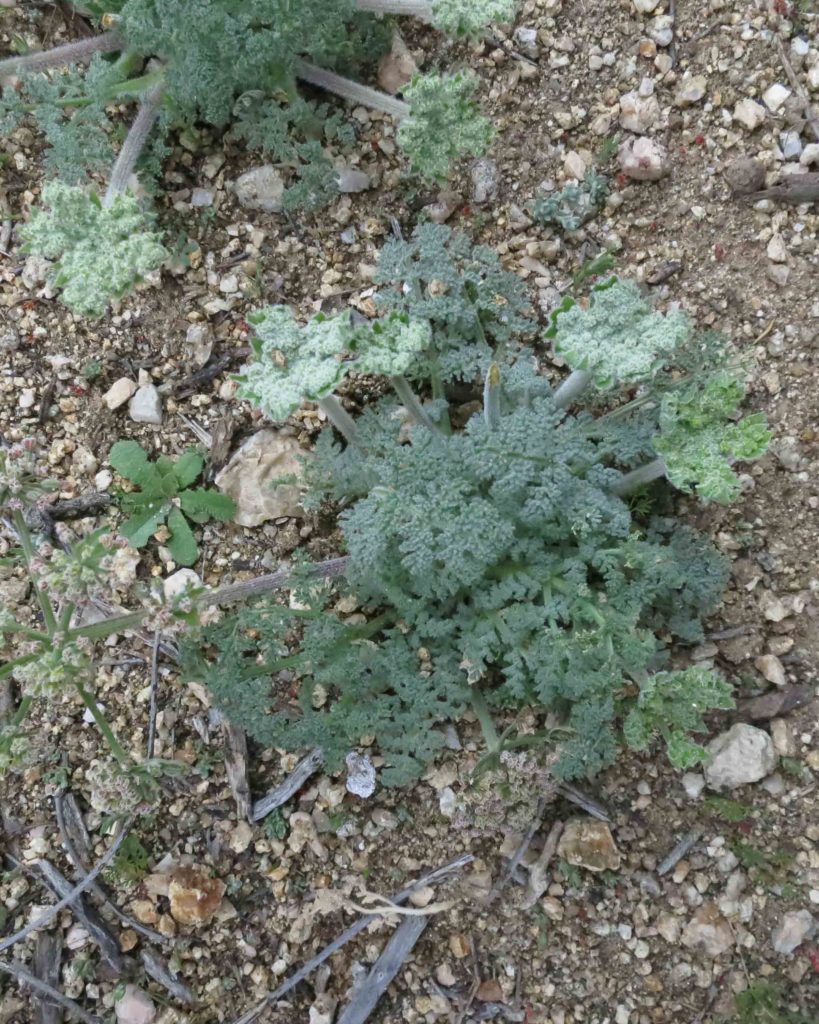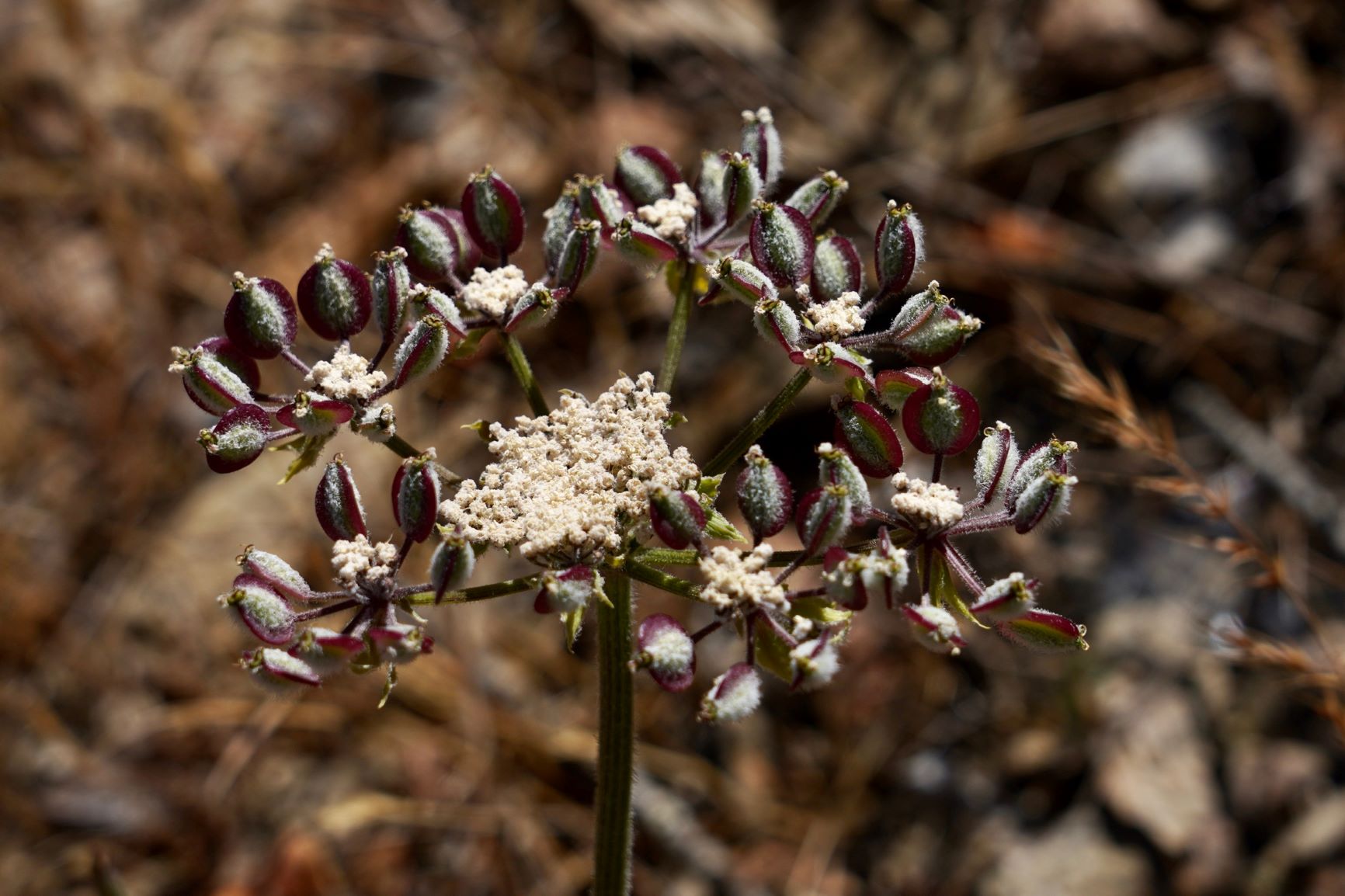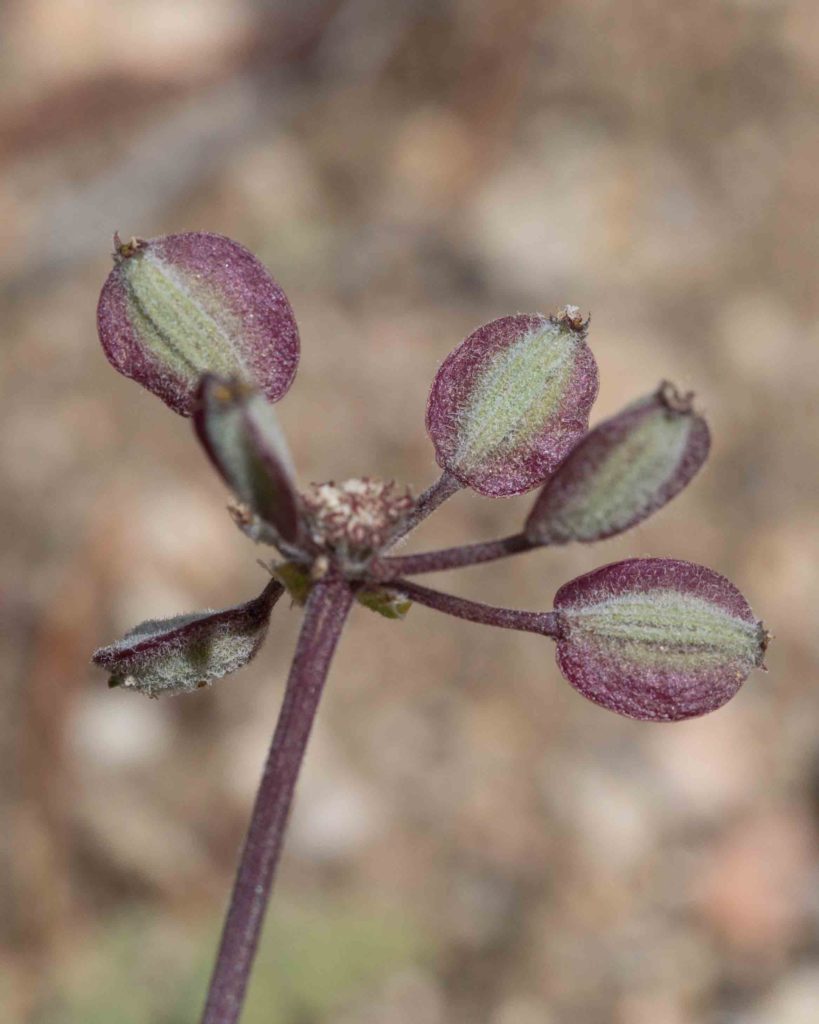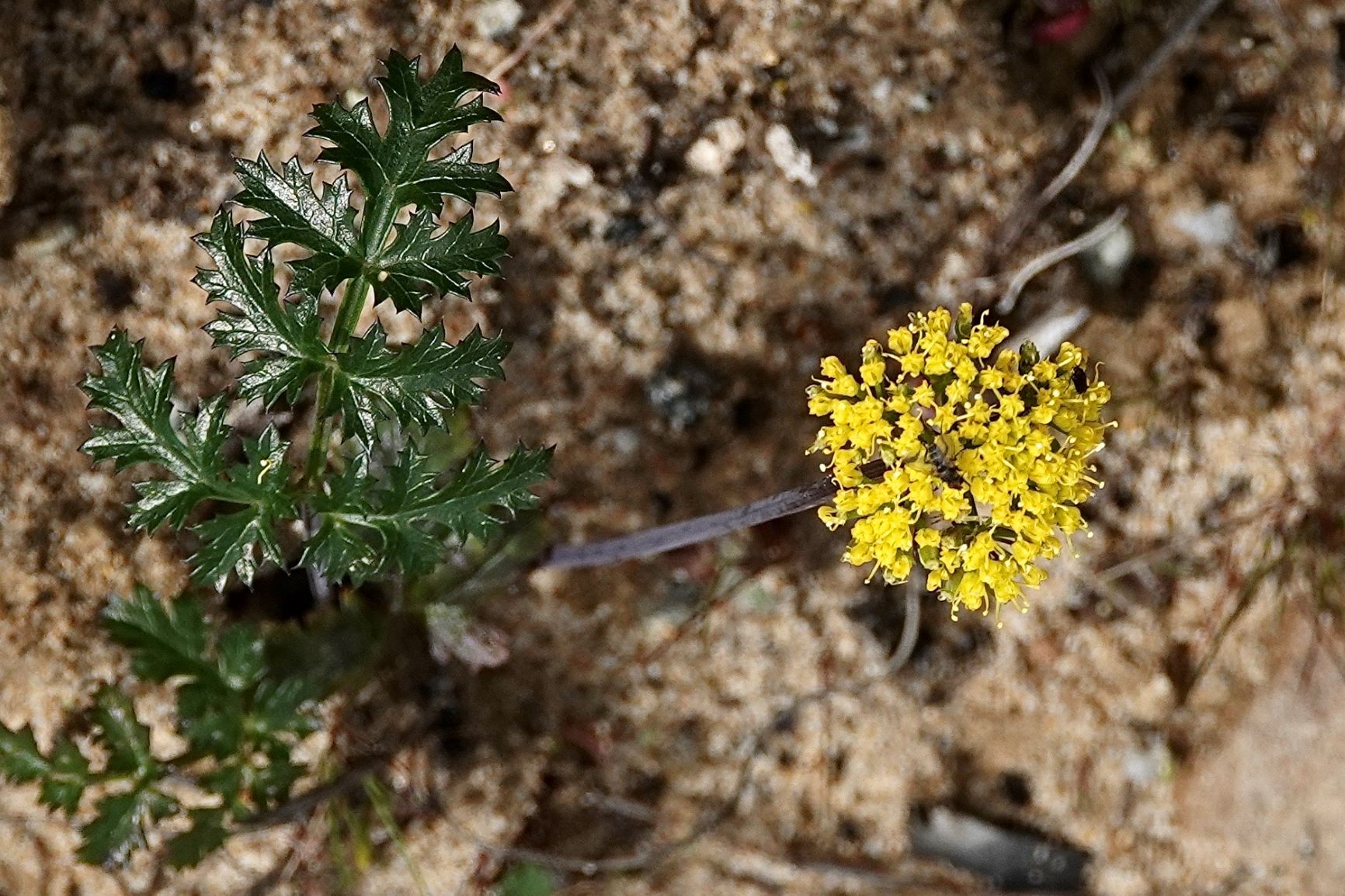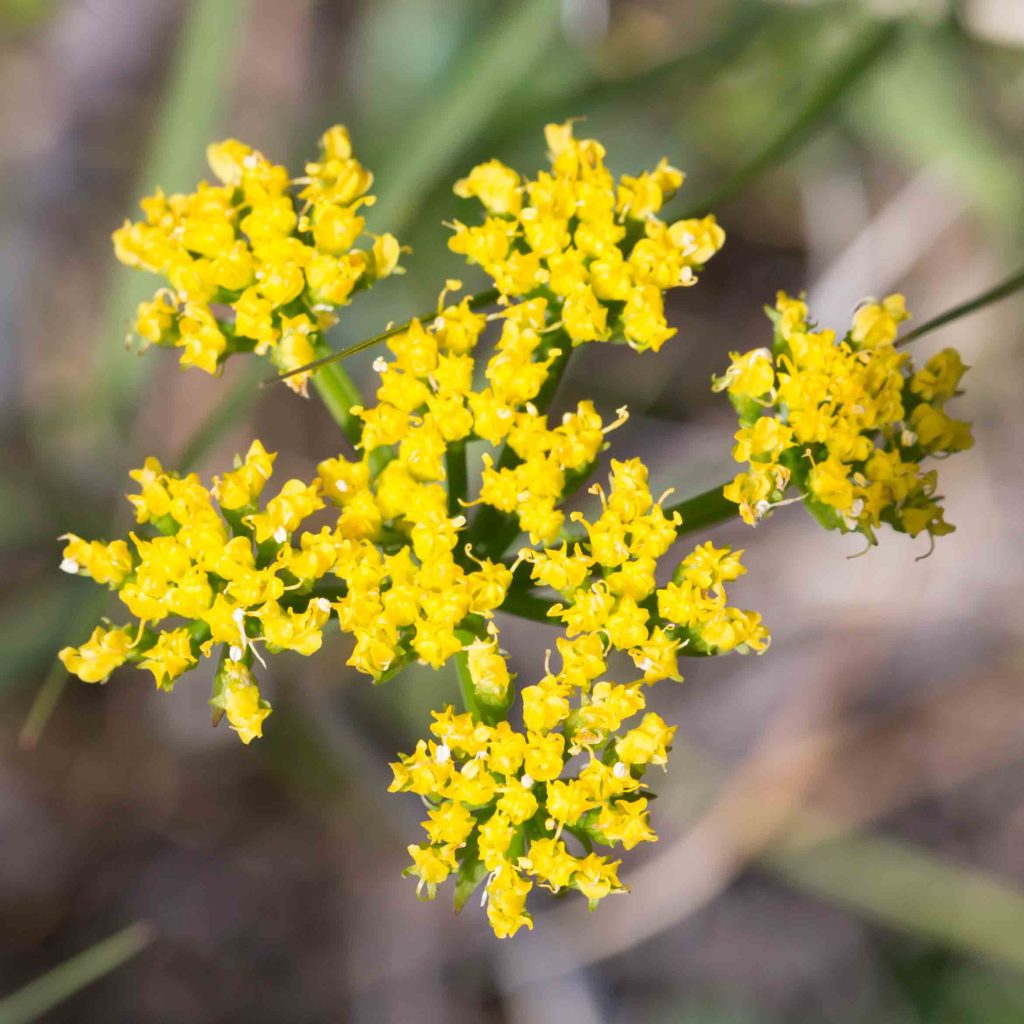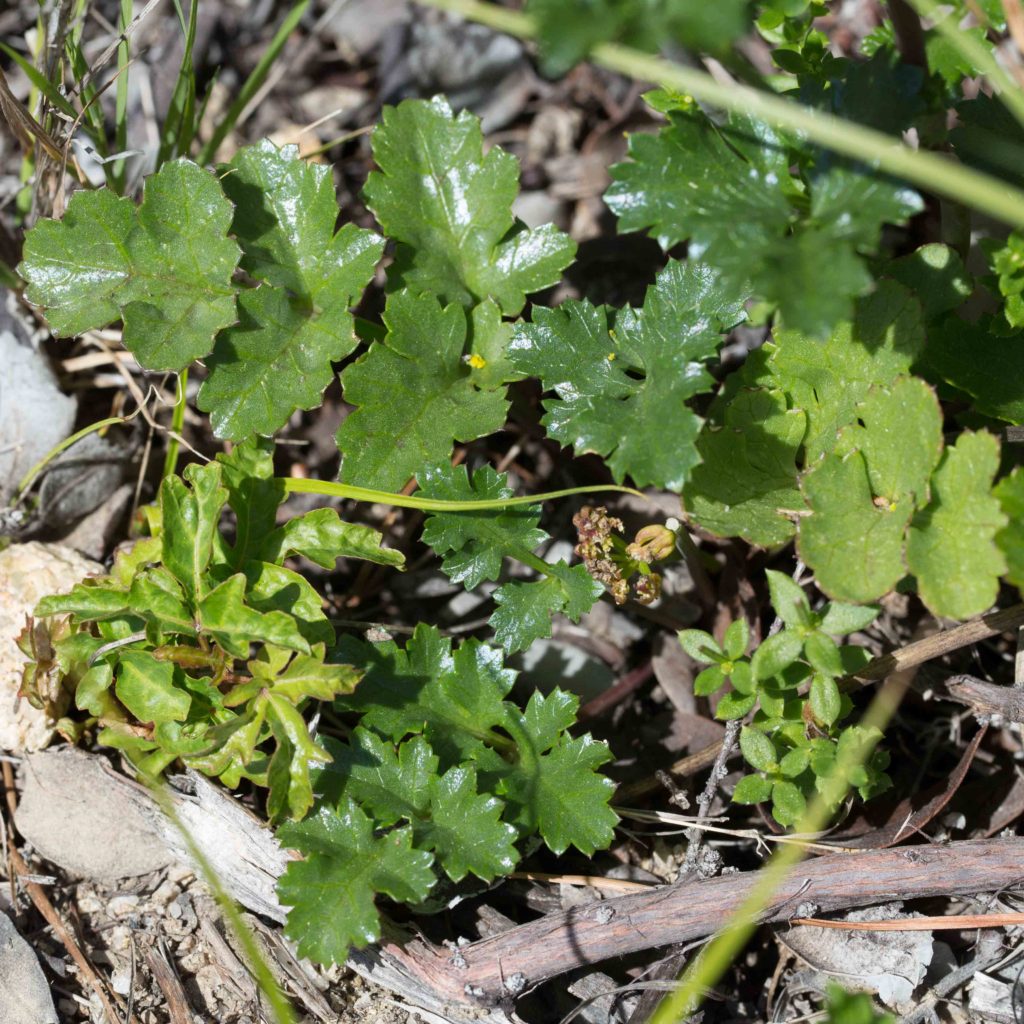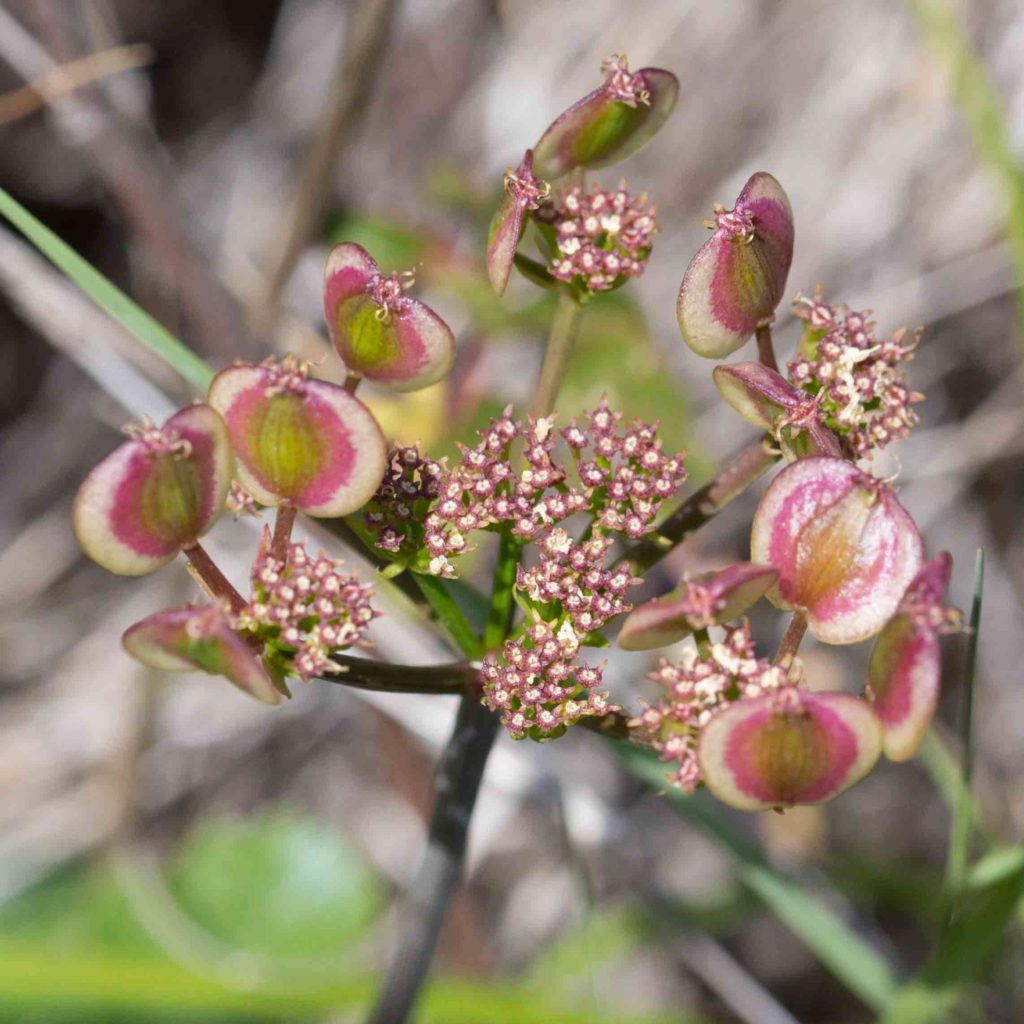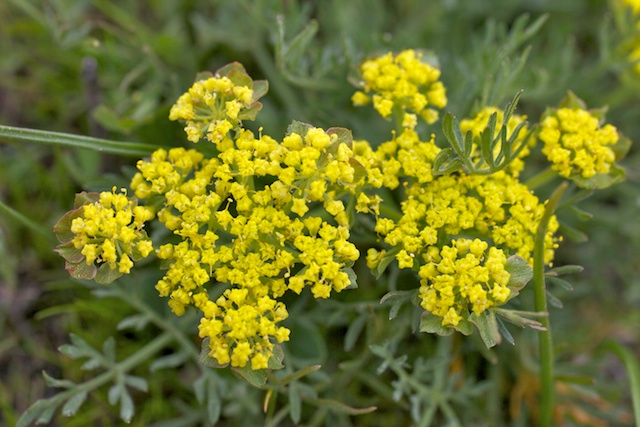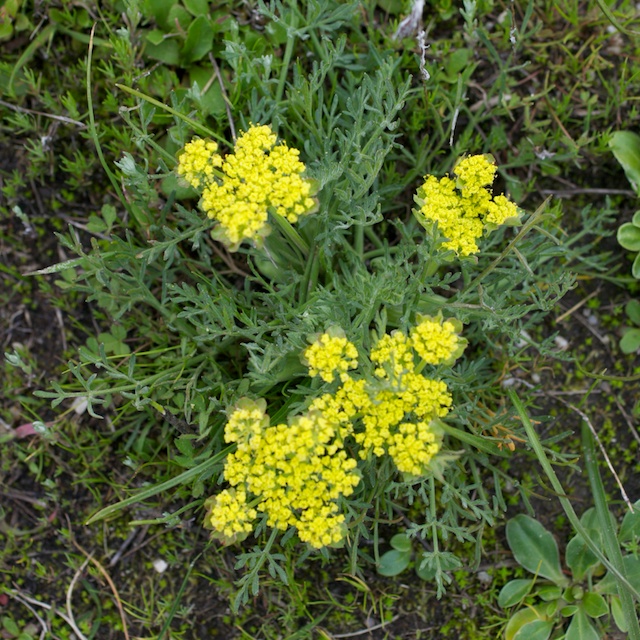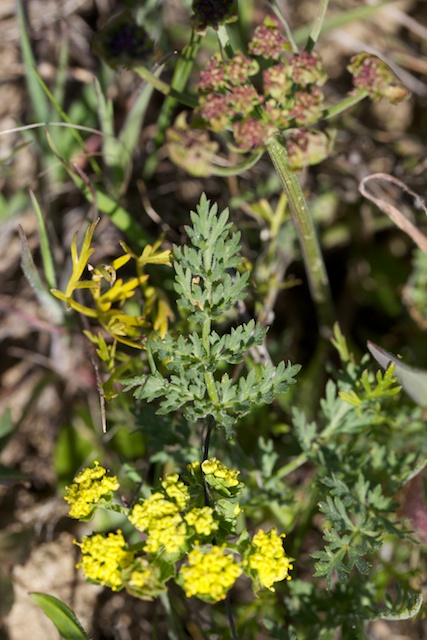Apiaceae: Carrot Family – Lomatium
Most members of the Apiaceae (carrot) family are characterized by having their flowers arranged in umbels, i.e. with segments radiating from a single point. Formerly, the family was called Umbelliferae. Many have compound umbels, where an umbel contains multiple inflorescences, each of which is an umbel. Umbels may be rounded, flat-topped or concentrated in head-like structures. Most members of the family have white flowers. Notable exceptions are Fennel, Lomatiums, most Sancicles and Tauschia, which have yellow flowers. This page shows Lomatiums, common plants with flat-topped umbels. To identify them, it helps to study the fruits.
California Lomatium – Lomatium californicum
Blooms:
Apr–June
Plant Height:
30–120 cm
Flower Size:
Medium cluster
Origin:
Native
Habitat:
Moist shady slopes
Notes:
Like most lomatiums, this has flat umbelliferous heads with small yellow flowers. However, unlike other lomatiums, its leaves are larger and quite distinctive, bluish-green with a noticeable celery smell. Each leaf is triangular-ovate, generally with 3 major lobes, with each lobe coarsely toothed. Fruits are 10–15 mm, oblong to ovate with thickened wings. Could be confused with Hartweg’s Tauschia (Tauschia hartwegii), which has leaflets that are more rounded and leathery, with smaller, sharp teeth. Photos #1-2 by CJH.
Lace Parsnip / Woolly-fruited Lomatium – Lomatium dasycarpum subsp. dasycarpum
Blooms:
Mar–June
Plant Height:
10–50 cm
Flower Size:
Medium cluster
Origin:
Native
Habitat:
Dry sandy places or stony ground
Notes:
Unusually for a lomatium, flowers are greenish-white rather than the typical yellow. The tight leaves have thread-like to linear segments that result in a lacy and slightly woolly appearance. Petals are tomentose and bracts coarsely hairy. The broad-winged fruits are sparsely hairy. Photos #1 and 3 by CJH.
Small-leaved Lomatium / Coast Parsnip – Lomatium parvifolium
Blooms:
Mar–June
Plant Height:
15–40 cm
Flower Size:
Medium cluster
Origin:
Native
Habitat:
Coastal
Notes:
This lomatium has small, broadly toothed leaves with pointed tips. The leaves are surprisingly variable, even on the same plant, ranging from sharp-lobed to a much more rounded form, and may be weakly spine-toothed or spine-tipped. Fruits have wings equal to or wider than the body, and are notched at the tip. Photo #1 by CJH.
Common Lomatium – Lomatium utriculatum
Blooms:
Mar–May
Plant Height:
< 50 cm
Flower Size:
Small cluster
Origin:
Native
Habitat:
Grassy slopes & flats
Notes:
The leaves of Common Lomatium are highly cut and finely divided. The base of the petiole has a conspicuous sheath. Sometimes, calyx lobes surround the flowers. Note the broad wings of the fruit, usually broader than the body.
